Overexposure: Irradiation and Halation
December 4, 2011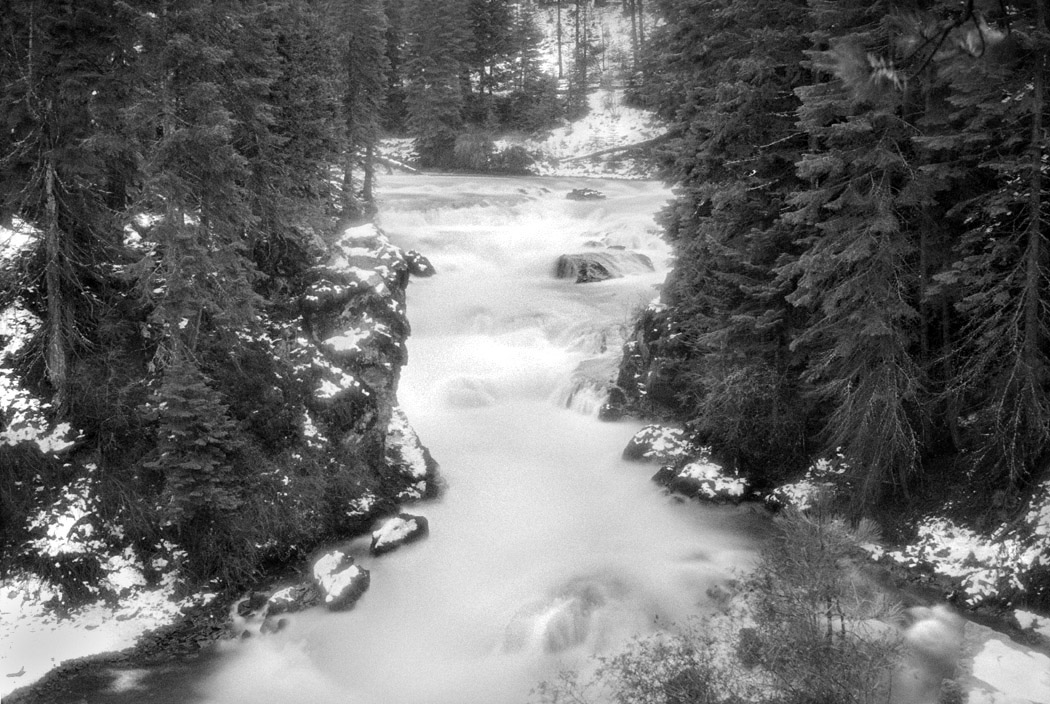
Benham Falls, Deschutes County, Oregon
With the shortening days, the sensitivity of the emulsion I've been working with since last spring has been steadily falling. In July, at sea level, the emulsion was in the ASA 25-40 range, depending on time of day and subject. In late November, I was lucky to get 6-12 at the Newport docks.
Higher elevation was considerably better. Over Thanksgiving I took artisan film to 4200 ft for the first time. The weather was horrid — dark clouds and always spitting a combination of rain and snow. Absolutely perfect to stay by a warm fire with a book, of course, but a bit lacking for photography. Still, I came away with an image I like and and a couple of good lessons.
Colorblind emulsions have too much going on to make absolutist pronouncements about sensitivity. Time of year, elevation, time of day, weather, and subject matter all play a part. I think I got about a stop more speed at 4200' than at sea level. At Benham Falls, I exposed for the trees and figured the water could fall out where it wanted. 12 sec at f/16 delivered, although a bit more exposure wouldn't have hurt. I only made one other bracket, at 8 sec and f/16. That exposure would have done in a pinch, but barely.
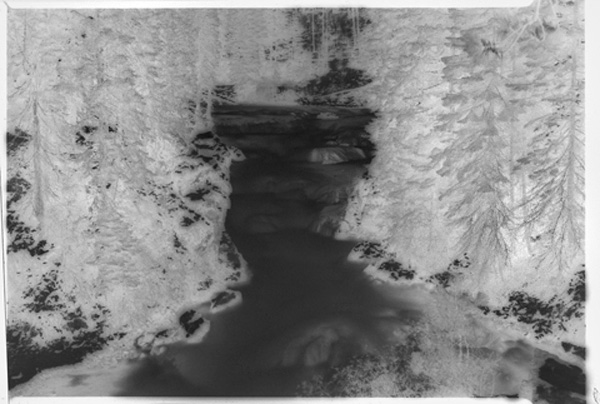
At 12 sec, the snow and water are seriously over-exposed. In this image, I don't think that matters and may even add to the overall mood, but regardless, it shows up nicely a couple of phenomenons — irradiance and halation.
Left: 2½ x 3½ inch negative. "TLF#2(beta)" emulsion on 6.9 mil 3M subbed film. 100 mm Zeiss lens, f/16, 12 sec.
Below: Crop of lower right corner of the negative and its inversion.

It's easy to see the exposure spill-over of the high density areas into the film rebate. This is exactly what happens in the highlights and surrounding areas. The result is degradation of detail — from minor to extreme.
From The Focal Encyclopedia of Photography, 1960 desk edition.
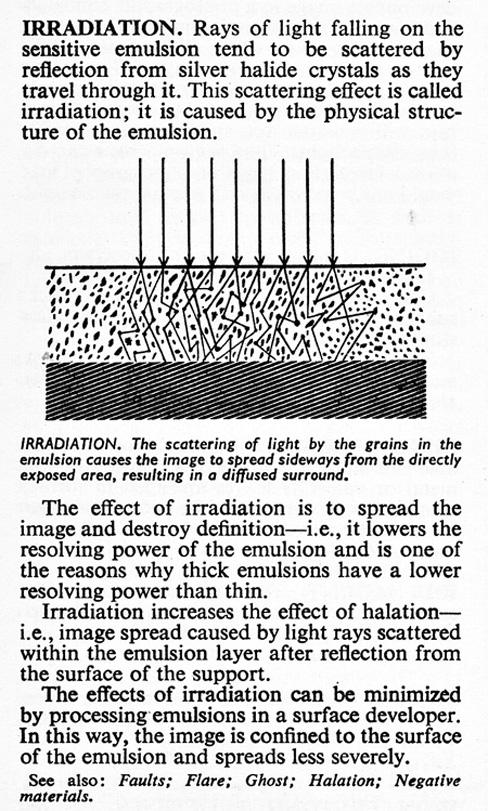
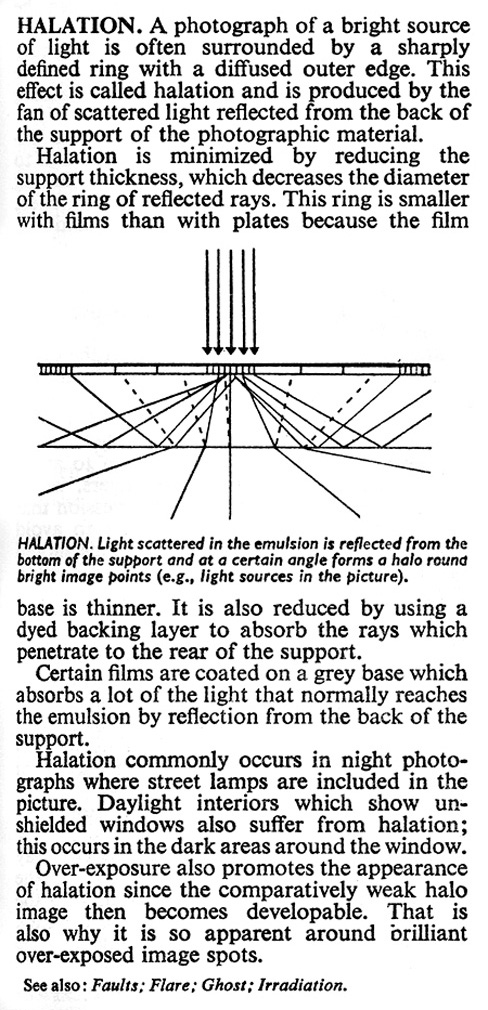
The crop below is a great example of what happens to detail. The area around the patches of snow is very dark rock, not light gray. Same with the edge of the cliff face.
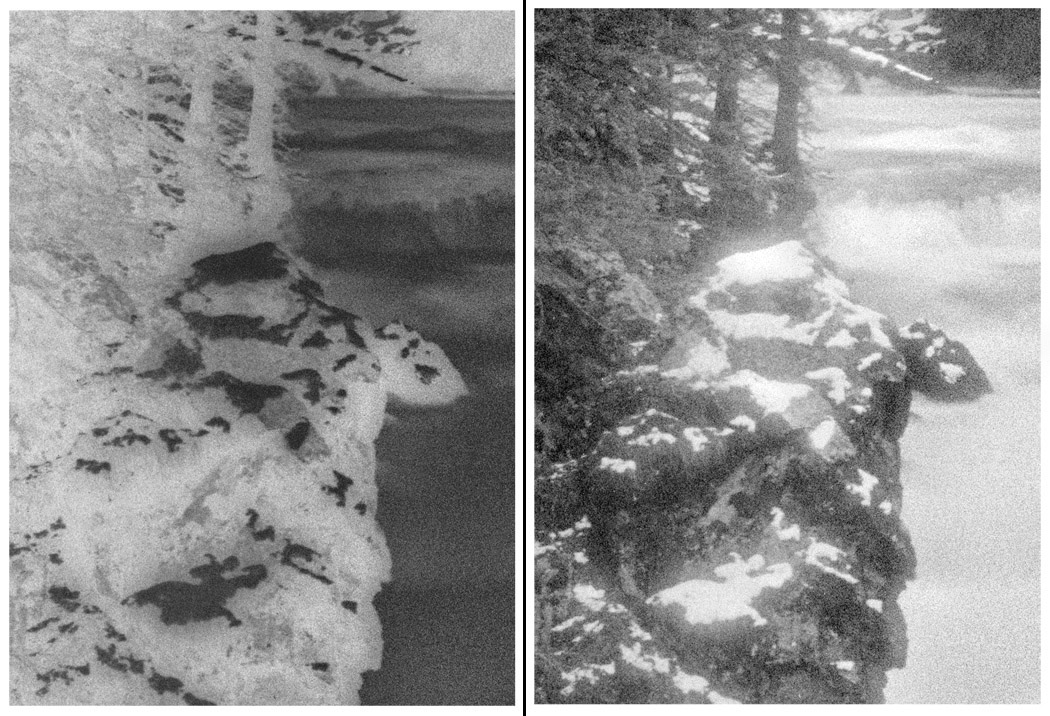
To be continued: Overexposure and Solarization